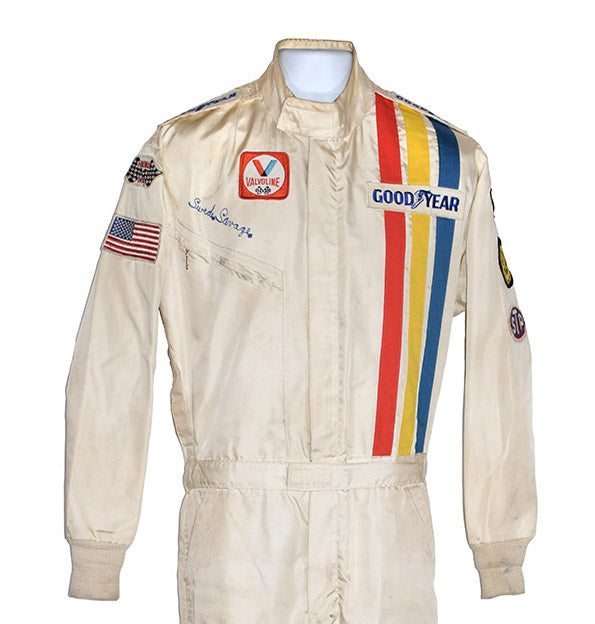

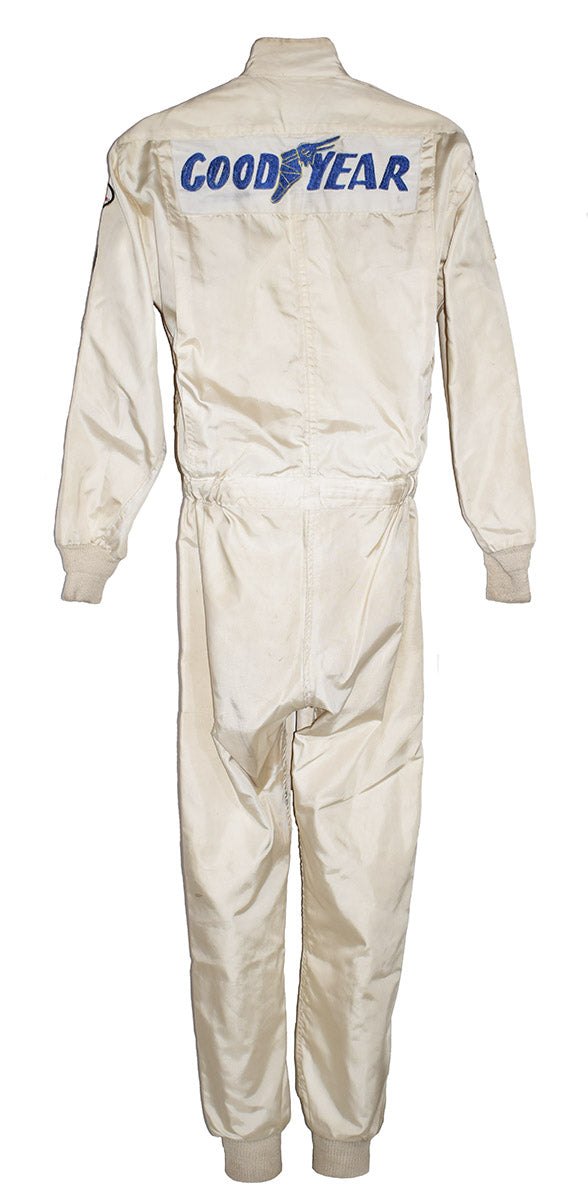
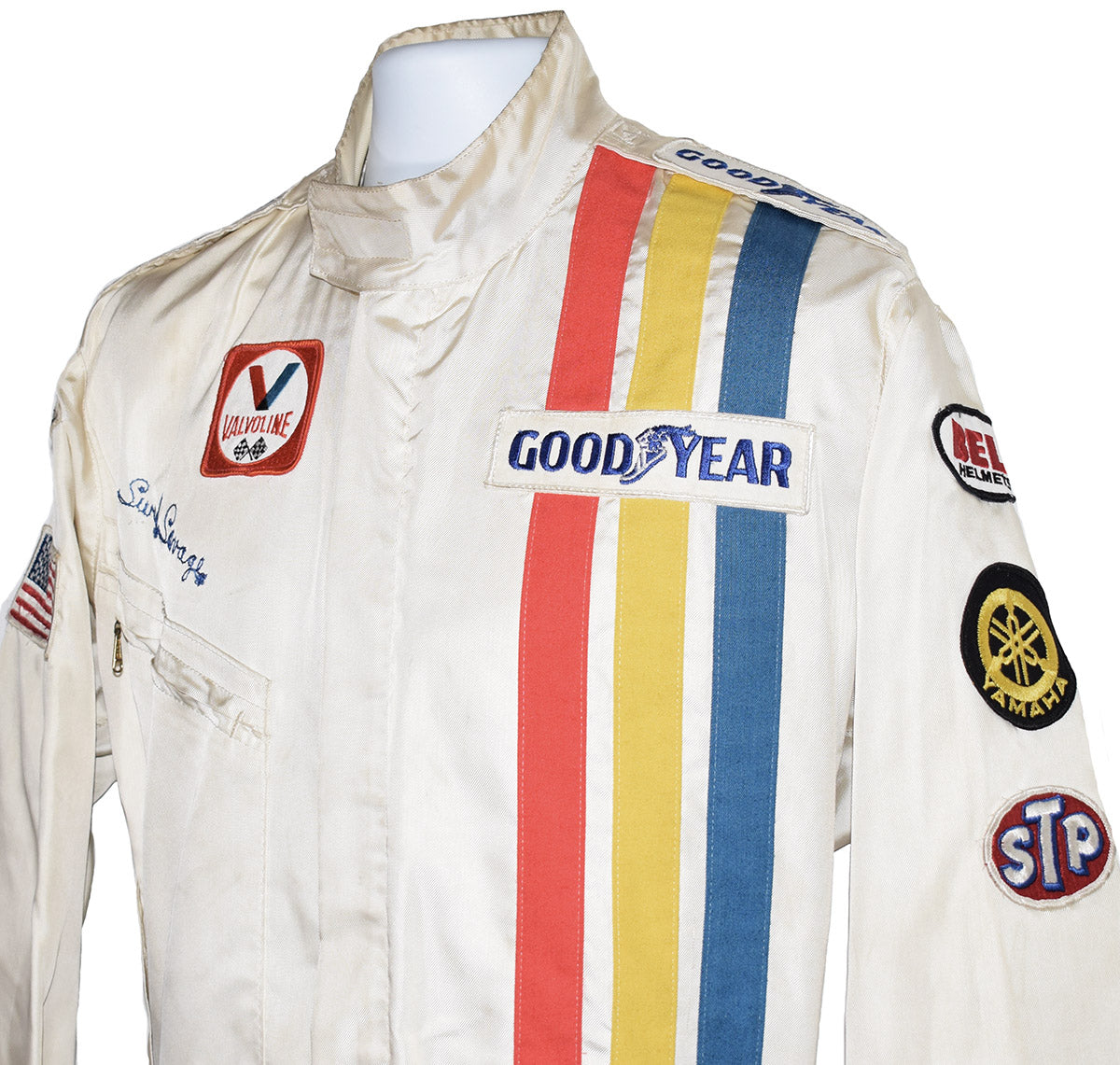
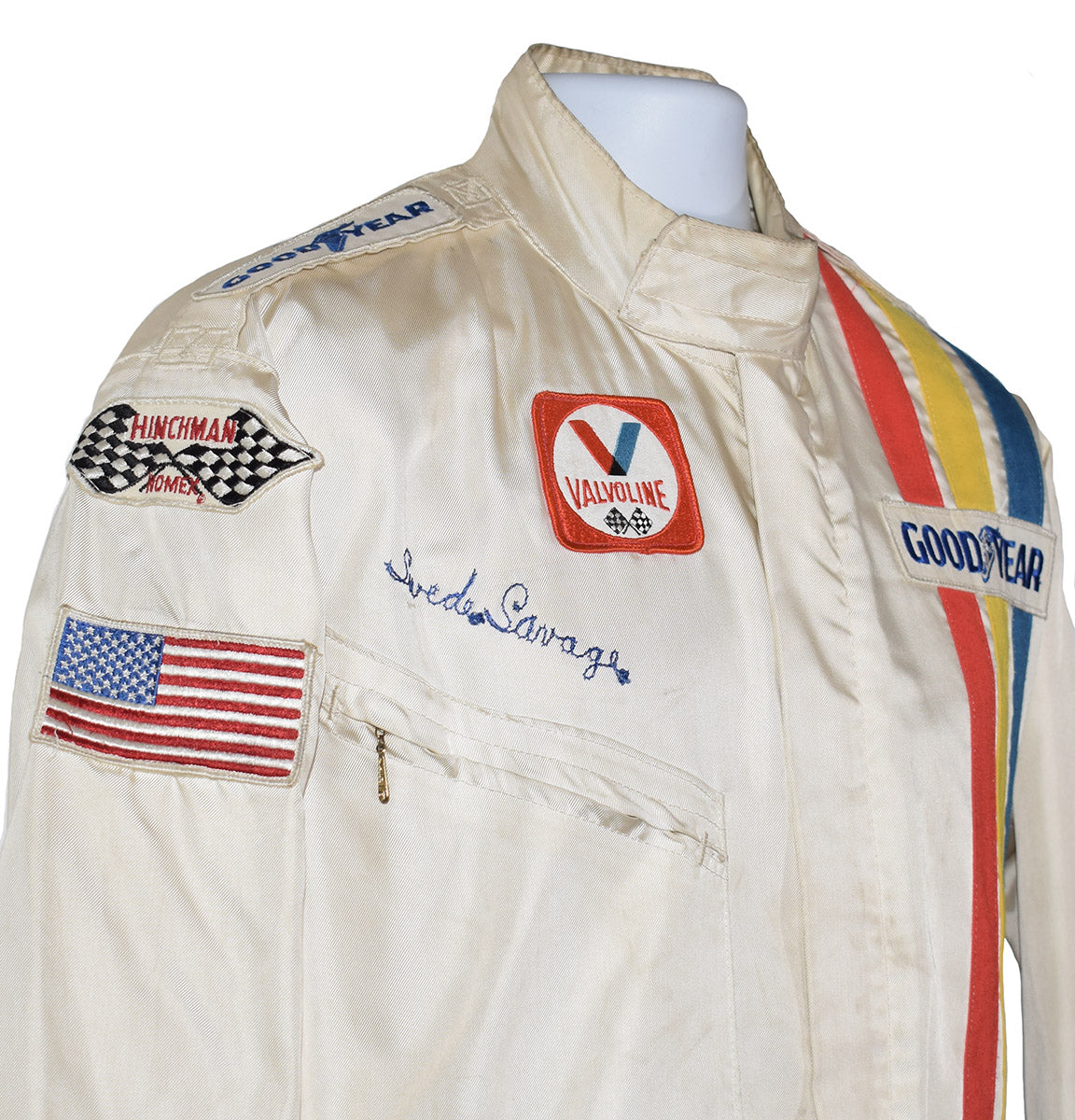
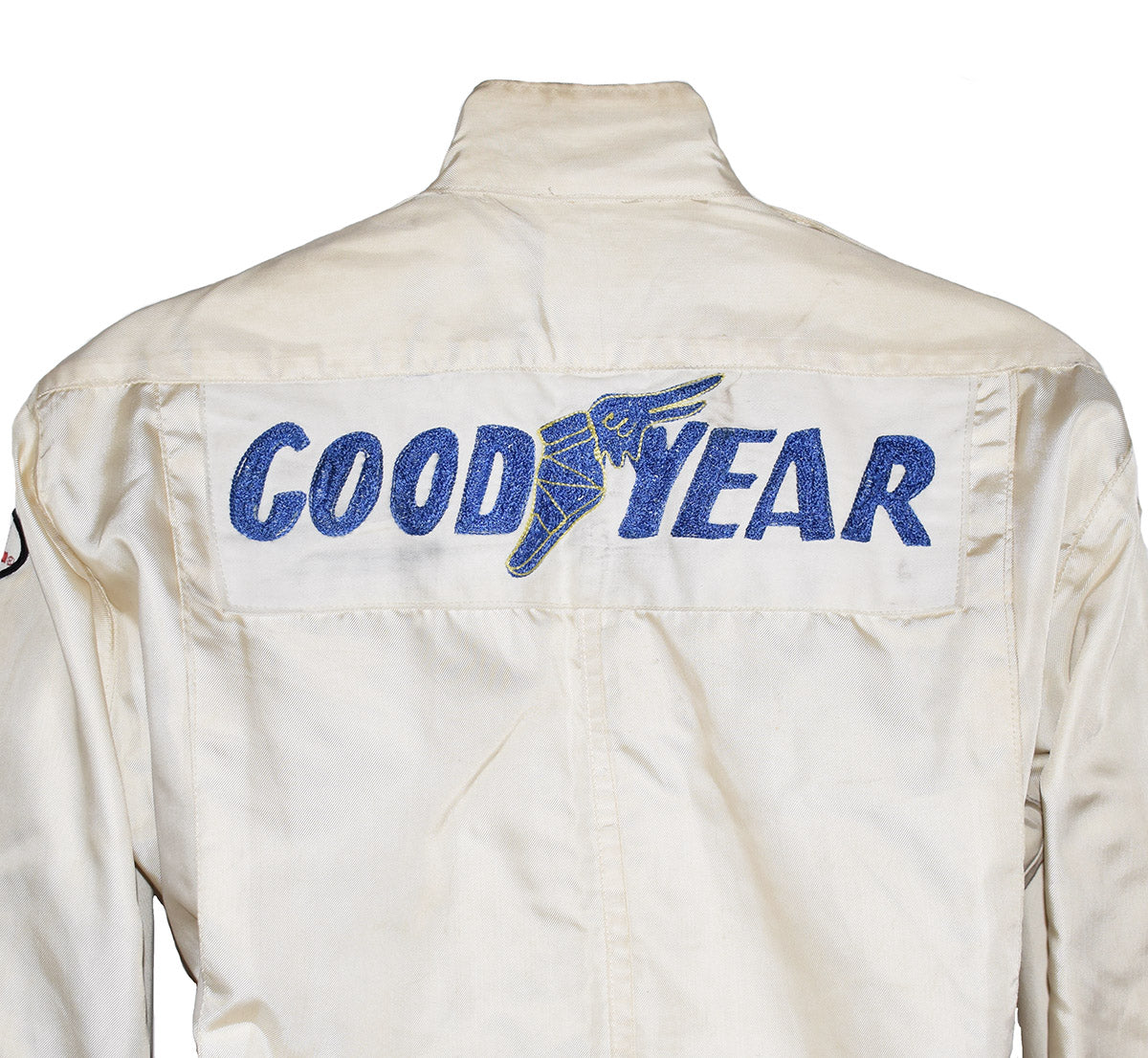
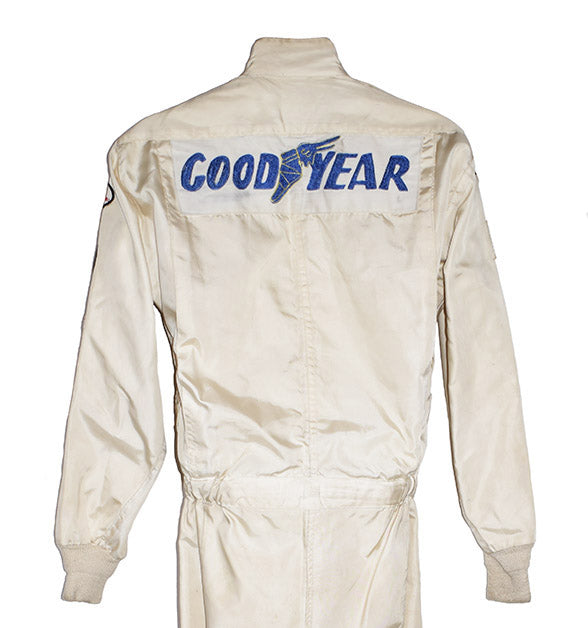
1972 Swede Savage Original Suit #1 Bell Yamaha STP
Choose options
David Earl Savage, Jr. nicknamed “Swede” was raised in San Bernardino, California. He
was interested in racing from an early age, trying his hand at quarter midgets and karting,
before turning his attention to motorcycles. He won multiple motorcycle races and
championships. In 1967, he finished 11 th in the Daytona 200 road race and was also
invited to perform in the Evel Knievel Stunt Show at Ascot Park in Los Angeles.
In 1966, Savage was invited by his mentor and friend, Dan Gurney, to Riverside
International Raceway, where, Gurney testing for Ford. Gurney introduced him to a Ford
public relations executive, who felt that Savage would be a great addition to their stable.
This brought an opportunity to become a development driver and to run a limited
schedule in the NASCAR Grand National (now Sprint Cup) series in 1967. Savage made
his stock car debut at North Carolina’s Hickory Speedway with the legendary Holman-
Moody team. In three races, he had two top ten finishes and was running third and fourth
in two other races before mechanical failures caused his retirement.
In 1968, Savage split his time between NASCAR and running both USRRC and Can-Am
with Dan Gurney’s All American Racers, where he had promising results. The next few
seasons saw Savage display his skills in a number of different racing arenas.
In 1969, only five years after his high school graduation, Savage had his first and only
run at the Daytona 500, driving a Mercury Cyclone for the Wood brothers. That same
season, he made his USAC Championship Car series debut, taking the Olsonite-Eagle to
a top-five finish at the Brainerd International Raceway road course. Savage also entered
one race in the SCCA Trans-Am series, grabbing second place at Lime Rock Park.
Dan Gurney, with backing from Plymouth, signed Savage to run the full 1970 season in
Trans-Am. Reliability issues caused a number of DNF’s for the team, but Swede earned
three pole position in the intensely competitive series, besting legendary drivers such as
Mark Donohue, Parnelli Jones and George Follmer. When he did manage to make it to
the checkers, it was always in the top-five. The high point came at Road America where
Savage took the car to a hard-fought second place. The season also saw Savage’s finest
racing moment when he won the USAC Championship Car season finale, the Bobby Ball
150, at Phoenix. With a big race win under his belt, Savage was beginning to make his
name and endeared himself to many fans.
In 1971, with a ride in Formula 5000 at the Questor Grand Prix, Savage had a throttle jam
itself wide-open, sending him hard into the wall. The resulting near-fatal head injuries
would put him out of racing for five months.
Returning to the cockpit for 1972, Savage signed with Pat Patrick for a full season in the
USAC Championship Car series. This would give the young driver the opportunity to
compete in his first Indianapolis 500. The first season with Patrick was unfruitful, with
Savage failing to finish in all but one race. His Indianapolis 500 debut was equally
inauspicious. Undaunted, he returned to the Patrick organization for 1973, teamed
alongside Gordon Johncock. He collected a pair of top-fives in the double-header at
Trenton as the team began preparations for Indianapolis.
The 1973 Indianapolis 500, turned out to be one of the darkest chapters of motor racing
history that many would prefer to forget. From the outset, practice was plagued with rain
and high winds, Art Pollard crashed hard in a practice session on Pole Day, sustaining
fatal injuries. When qualifications began for the 500, Savage was the first to break the
track record with a four lap average of 196.582 mph.
When qualifications had concluded, he ended up with the fourth starting spot. A Monday
race day downpour delayed the start for more than four hours. At the drop of the green, a
horrifying scene unfolded as eleven cars crashed, and Salt Walther’s machine climbed the
catch fence. The fuel tank of Walther’s car split open, spraying burning fuel into the front
stretch grandstands. While the injured spectators and drivers were being attended to, the
rains began to fall again, delaying the race until the next morning. Again, the skies
opened up and again, another day was lost. The rains continued on Wednesday morning,
but the clouds finally broke and the cars roared off for the start shortly after 2:00 pm.
Bobby Unser took the early lead. When Unser had an unusually long pit stop, Savage
found himself leading the Indianapolis 500 for the first time in his career. He darted into
the pit lane on lap 57, he headed back onto the race. In the blink of an eye, everything
changed. Some say that the rear wing broke, others speculate that there was oil on the
track. Whatever the case may be, Savage’s car inexplicably veered off of turn 4 and
slammed into the inside retaining wall nearly head on. The car exploded into pieces as a
fireball erupted. Burned, battered and bruised, the good-natured Savage still managed to
crack a few jokes with the rescue workers that transported him to the hospital.
The rains hit the Speedway once again, ending the race after 332 miles. Savage’s
teammate ,Gordon Johncock, was declared the winner. Despite multiple injuries, Savage
was in good spirits and the prognosis seemed cautiously hopeful for a full recovery.
However, he succumbed thirty-three days after the accident to complications from severe
damage to his lungs from the fumes he had inhaled. He was just 26 years old.
This suit is being made available for the first time from the Savage family. Swede’s suits
were packed away in storage after he passed away and have only recently been re-
discovered. Swede was the last driver to die due to an accident on race day at the
Indianapolis 500. Swede’s wife, Sheryl, was pregnant at the time and Angela Savage was
born as Swede’s posthumous daughter four months after the crash. Angela has decided
after all these years to let a few items go to a good home. Each suit comes with a signed
COA from Hall of Fame Collection and Angela Savage.
Please contact us today at info@racinghalloffamecollection.com to purchase this suit.
*suits are still being researched on specific history and more information will be added soon.
was interested in racing from an early age, trying his hand at quarter midgets and karting,
before turning his attention to motorcycles. He won multiple motorcycle races and
championships. In 1967, he finished 11 th in the Daytona 200 road race and was also
invited to perform in the Evel Knievel Stunt Show at Ascot Park in Los Angeles.
In 1966, Savage was invited by his mentor and friend, Dan Gurney, to Riverside
International Raceway, where, Gurney testing for Ford. Gurney introduced him to a Ford
public relations executive, who felt that Savage would be a great addition to their stable.
This brought an opportunity to become a development driver and to run a limited
schedule in the NASCAR Grand National (now Sprint Cup) series in 1967. Savage made
his stock car debut at North Carolina’s Hickory Speedway with the legendary Holman-
Moody team. In three races, he had two top ten finishes and was running third and fourth
in two other races before mechanical failures caused his retirement.
In 1968, Savage split his time between NASCAR and running both USRRC and Can-Am
with Dan Gurney’s All American Racers, where he had promising results. The next few
seasons saw Savage display his skills in a number of different racing arenas.
In 1969, only five years after his high school graduation, Savage had his first and only
run at the Daytona 500, driving a Mercury Cyclone for the Wood brothers. That same
season, he made his USAC Championship Car series debut, taking the Olsonite-Eagle to
a top-five finish at the Brainerd International Raceway road course. Savage also entered
one race in the SCCA Trans-Am series, grabbing second place at Lime Rock Park.
Dan Gurney, with backing from Plymouth, signed Savage to run the full 1970 season in
Trans-Am. Reliability issues caused a number of DNF’s for the team, but Swede earned
three pole position in the intensely competitive series, besting legendary drivers such as
Mark Donohue, Parnelli Jones and George Follmer. When he did manage to make it to
the checkers, it was always in the top-five. The high point came at Road America where
Savage took the car to a hard-fought second place. The season also saw Savage’s finest
racing moment when he won the USAC Championship Car season finale, the Bobby Ball
150, at Phoenix. With a big race win under his belt, Savage was beginning to make his
name and endeared himself to many fans.
In 1971, with a ride in Formula 5000 at the Questor Grand Prix, Savage had a throttle jam
itself wide-open, sending him hard into the wall. The resulting near-fatal head injuries
would put him out of racing for five months.
Returning to the cockpit for 1972, Savage signed with Pat Patrick for a full season in the
USAC Championship Car series. This would give the young driver the opportunity to
compete in his first Indianapolis 500. The first season with Patrick was unfruitful, with
Savage failing to finish in all but one race. His Indianapolis 500 debut was equally
inauspicious. Undaunted, he returned to the Patrick organization for 1973, teamed
alongside Gordon Johncock. He collected a pair of top-fives in the double-header at
Trenton as the team began preparations for Indianapolis.
The 1973 Indianapolis 500, turned out to be one of the darkest chapters of motor racing
history that many would prefer to forget. From the outset, practice was plagued with rain
and high winds, Art Pollard crashed hard in a practice session on Pole Day, sustaining
fatal injuries. When qualifications began for the 500, Savage was the first to break the
track record with a four lap average of 196.582 mph.
When qualifications had concluded, he ended up with the fourth starting spot. A Monday
race day downpour delayed the start for more than four hours. At the drop of the green, a
horrifying scene unfolded as eleven cars crashed, and Salt Walther’s machine climbed the
catch fence. The fuel tank of Walther’s car split open, spraying burning fuel into the front
stretch grandstands. While the injured spectators and drivers were being attended to, the
rains began to fall again, delaying the race until the next morning. Again, the skies
opened up and again, another day was lost. The rains continued on Wednesday morning,
but the clouds finally broke and the cars roared off for the start shortly after 2:00 pm.
Bobby Unser took the early lead. When Unser had an unusually long pit stop, Savage
found himself leading the Indianapolis 500 for the first time in his career. He darted into
the pit lane on lap 57, he headed back onto the race. In the blink of an eye, everything
changed. Some say that the rear wing broke, others speculate that there was oil on the
track. Whatever the case may be, Savage’s car inexplicably veered off of turn 4 and
slammed into the inside retaining wall nearly head on. The car exploded into pieces as a
fireball erupted. Burned, battered and bruised, the good-natured Savage still managed to
crack a few jokes with the rescue workers that transported him to the hospital.
The rains hit the Speedway once again, ending the race after 332 miles. Savage’s
teammate ,Gordon Johncock, was declared the winner. Despite multiple injuries, Savage
was in good spirits and the prognosis seemed cautiously hopeful for a full recovery.
However, he succumbed thirty-three days after the accident to complications from severe
damage to his lungs from the fumes he had inhaled. He was just 26 years old.
This suit is being made available for the first time from the Savage family. Swede’s suits
were packed away in storage after he passed away and have only recently been re-
discovered. Swede was the last driver to die due to an accident on race day at the
Indianapolis 500. Swede’s wife, Sheryl, was pregnant at the time and Angela Savage was
born as Swede’s posthumous daughter four months after the crash. Angela has decided
after all these years to let a few items go to a good home. Each suit comes with a signed
COA from Hall of Fame Collection and Angela Savage.
Please contact us today at info@racinghalloffamecollection.com to purchase this suit.
*suits are still being researched on specific history and more information will be added soon.
